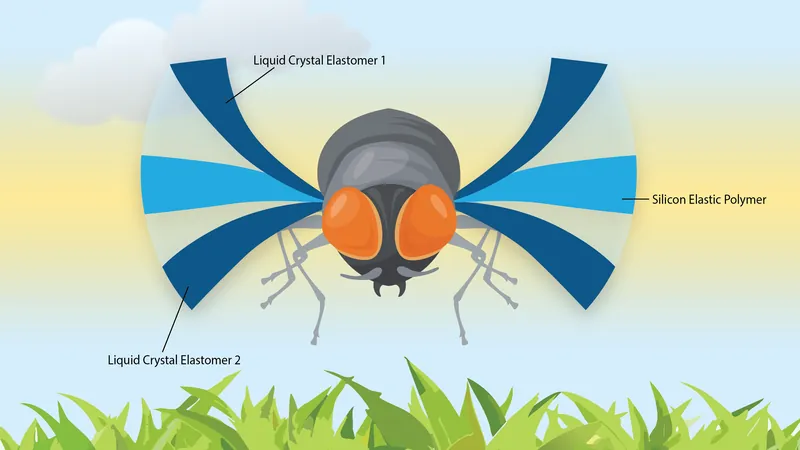
Revolutionary Soft Robot Engineered to Imitate Insect Flight
2025-03-21
Author: Li
UCLA materials scientists have made a groundbreaking leap in robotics with a newly designed light-responsive actuator that mimics the intricate contracting and relaxing motions of insect wings. This innovation not only paves the way for untethered, autonomous robotic systems powered solely by light but could also redefine the future of flight in small robotic devices.
As highlighted by Ximin He, an associate professor at the UCLA Samueli School of Engineering and lead author of the study, “High-power autonomous soft actuators are in high demand but have faced numerous challenges due to their reliance on tethered power and control systems.” To combat this, the research team engineered a trilayer actuator that operates autonomously, powered by light without the need for external control mechanisms.
The details of their remarkable findings were published in Nature Materials, showcasing a staggering power output of 33 watts per kilogram—equivalent to some flying insects. This new design is an astonishing 275 times more powerful than previously documented flapping-wing actuators using similar technologies, suggesting its immense potential to support small aerial robots that replicate insect flight patterns.
“This work represents a monumental advancement in soft robotics,” stated He. “We are generating an autonomous flapping motion fueled entirely by a constant light source, demonstrating enough power for practical, insect-sized flying robots.”
The actuator design consists of two layers made from liquid crystal elastomers, which are responsive to light and flex in opposing directions. Sandwiched in between is a neutral silicone polymer layer that enhances performance. As the actuator detects natural light, the top and bottom layers move alternately, producing a rapid flapping motion that can reach up to 13 beats per second, or almost 780 beats per minute—an impressive feat for robotic technology.
Building on legacy designs that employed single or double flexing mechanisms, the novel FLaPTOR (short for "flapping trilayer oscillatory robot") allows for enhanced mobility and functioning. This design empowers more coordinated movements during flight, creating effective upstrokes and downstrokes reminiscent of how actual insects fly.
The research team also explored the actuator's versatility beyond lift tests, evaluating its capabilities to propel a tiny boat at 1.6 millimeters per second and maneuvering a robot systematically along guide wires at varying speeds. Notably, this technology can respond to a wide spectrum of light, including blue, green, red, near-infrared, and even simulated solar light.
Yusen Zhao, the first author of the study and a graduate materials science student, noted, “The actuator’s impressive functionality solely with natural light indicates that with further refinement, it could enable untethered flight for small robotic devices about the size of a bee.”
But the possibilities of FLaPTOR do not stop at aviation. This multifunctional actuator can also be adapted for walking robots or devices that navigate fluid surfaces like water. Its light-detecting capabilities could also pave the way for innovative applications in sensing technologies and energy conversion systems.
This ground-breaking research marks a pivotal moment for the field of soft robotics, potentially ushering in a new era of efficient, autonomous technologies that could have profound implications on industries ranging from logistics to environmental monitoring. Stay tuned as we continue to follow the developments of this exciting technology!




 Brasil (PT)
Brasil (PT)
 Canada (EN)
Canada (EN)
 Chile (ES)
Chile (ES)
 Česko (CS)
Česko (CS)
 대한민국 (KO)
대한민국 (KO)
 España (ES)
España (ES)
 France (FR)
France (FR)
 Hong Kong (EN)
Hong Kong (EN)
 Italia (IT)
Italia (IT)
 日本 (JA)
日本 (JA)
 Magyarország (HU)
Magyarország (HU)
 Norge (NO)
Norge (NO)
 Polska (PL)
Polska (PL)
 Schweiz (DE)
Schweiz (DE)
 Singapore (EN)
Singapore (EN)
 Sverige (SV)
Sverige (SV)
 Suomi (FI)
Suomi (FI)
 Türkiye (TR)
Türkiye (TR)
 الإمارات العربية المتحدة (AR)
الإمارات العربية المتحدة (AR)